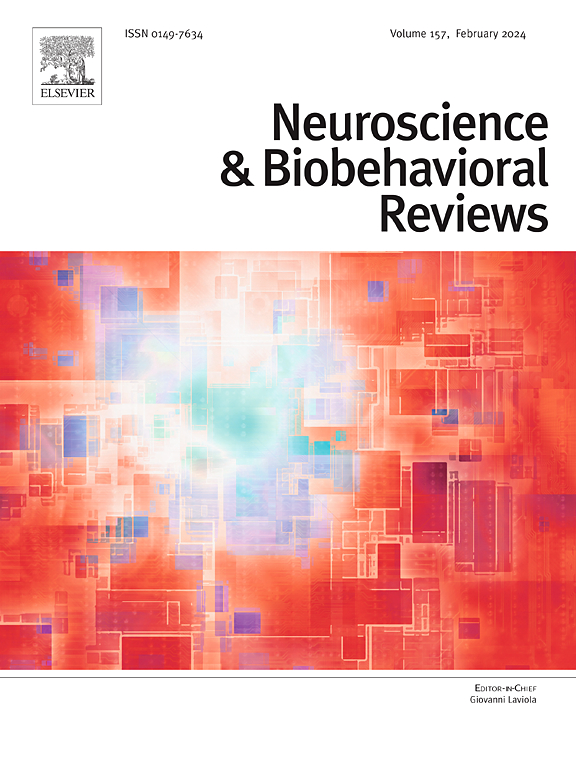从鸣鸟到人类:FOXP2 在语言和运动学习中的多方面作用。
IF 7.9
1区 医学
Q1 BEHAVIORAL SCIENCES
引用次数: 0
摘要
运动学习涉及复杂的大脑结构网络,对于完成说话等任务至关重要。大脑皮层、皮层下核和小脑都参与了运动学习和发声。发声学习已在不同物种中得到证实。然而,这项任务还需要进一步研究和重新评估,特别是在被认为是非发声学习者的物种中,这样才有可能发现新的见解。FOXP2 是一种转录因子,与语音学习和执行有关。有几种变体与言语和认知障碍有关;研究最多的是在 KE 家族中发现的 R553H 变体,该家族中一半以上的成员表现出言语障碍。在与运动学习和执行相关的区域,大脑中 FOXP2 的表达在不同物种中表现出一致的模式。表达突变 FOXP2 的动物模型显示运动学习和发声能力受损。受FOXP2调控的基因与神经分化、连接和突触可塑性有关,表明其在大脑发育和功能中的作用。本综述从解剖学和功能角度探讨了 FOXP2、运动学习和语言之间错综复杂的关系。本文章由计算机程序翻译,如有差异,请以英文原文为准。
From songbird to humans: The multifaceted roles of FOXP2 in speech and motor learning
Motor learning involves a complex network of brain structures and is crucial for tasks like speech. The cerebral cortex, subcortical nuclei, and cerebellum are involved in motor learning and vocalization. Vocal learning has been demonstrated across species. However, it is a task that should be further studied and reevaluated, particularly in species considered non-vocal learners, to potentially uncover new insights. FOXP2, a transcription factor, has been implicated in speech learning and execution. Several variants have been involved in speech and cognitive impairments; the most studied is the R553H, found in the KE family, where more than half of the members show verbal dyspraxia. Brain FOXP2 expression shows consistent patterns across species in regions associated with motor learning and execution. Animal models expressing mutated FOXP2 showed impaired motor learning and vocalization. Genes regulated by FOXP2 are related to neural differentiation, connectivity, and synaptic plasticity, indicating its role in brain development and function. This review explores the intricate relationship between FOXP2, motor learning, and speech in an anatomical and functional context.
求助全文
通过发布文献求助,成功后即可免费获取论文全文。
去求助
来源期刊
CiteScore
14.20
自引率
3.70%
发文量
466
审稿时长
6 months
期刊介绍:
The official journal of the International Behavioral Neuroscience Society publishes original and significant review articles that explore the intersection between neuroscience and the study of psychological processes and behavior. The journal also welcomes articles that primarily focus on psychological processes and behavior, as long as they have relevance to one or more areas of neuroscience.

 求助内容:
求助内容: 应助结果提醒方式:
应助结果提醒方式:


